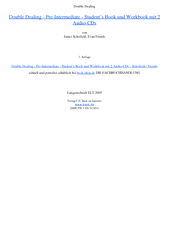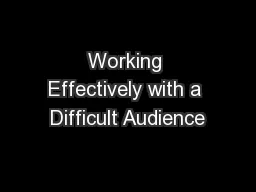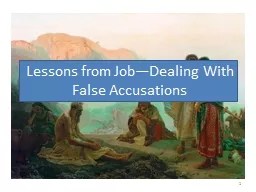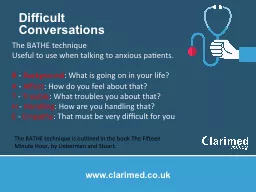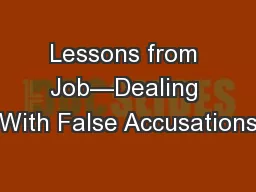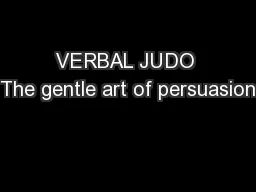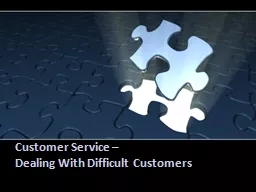PPT-Dealing with Difficult
Author : lindy-dunigan | Published Date : 2016-09-09
People Presented by Everett Perry Morning Blues Perception of Communication 55 Visual 38 Tone 7 Words Repeat this sentence emphasizing one word only I never
Presentation Embed Code
Download Presentation
Download Presentation The PPT/PDF document "Dealing with Difficult" is the property of its rightful owner. Permission is granted to download and print the materials on this website for personal, non-commercial use only, and to display it on your personal computer provided you do not modify the materials and that you retain all copyright notices contained in the materials. By downloading content from our website, you accept the terms of this agreement.
Dealing with Difficult: Transcript
Download Rules Of Document
"Dealing with Difficult"The content belongs to its owner. You may download and print it for personal use, without modification, and keep all copyright notices. By downloading, you agree to these terms.
Related Documents


